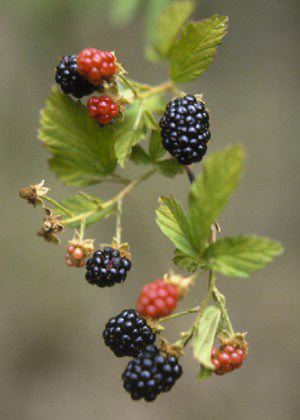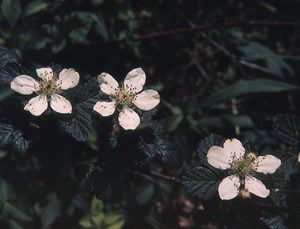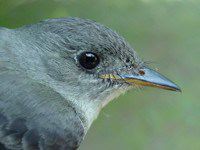
Photos © Hilton Pond Center
- The Fourth of July is celebrated in the United States as Independence Day. it's a time to reflect on how our country came to be and where we want it to go in the future. This holiday week also coincides with a natural event of significance at Hilton Pond Center: the peak of blackberry season. Most years, the last ten days in June and first ten days of July are a time of great delight for staff members at the Center, for it is then that we meander the trails in pursuit of the perfect blackberry (above). When executive director Bill Hilton Jr. was a graduate student in far-off Minnesota, he often dreamed of coming back to South Carolina, slipping on a pair of sandals and shorts, grabbing his binoculars, and watching birds and the mid-summer sunrise while gobbling down handfuls of fresh, ripe blackberries. That's why the trails at the Center were laid out to go past the best blackberry patches, and that's why Hilton's fingers take on a purplish tinge along about the first of July. One of the other great things about the trails is that they allow access to blackberry vines without having to worry about scratchy thorns and itchy chiggers that are so irritating at this time of year.
- Botanists disagree about how many varieties of native blackberries (Rubus spp.) occur in North America. Some authorities say there are as many as 2,500 species, while others claim that there are far fewer than that. One problem in classifying blackberries is that they can reproduce asexually by sending out runners, establishing a large local colony of plants that are identical in appearance and genetic make-up. In addition, that same colony produces genetically diverse seeds that germinate and grow into plants that may look a little different than their parents. To complicate matters, blackberry appearance also seems to be influenced by environmental factors such as soil nutrients, exposure, and available moisture. Regardless, however, blackberries all taste good to us, and we're happy when there's a good blackberry year.
- Unfortunately, the June 2000 drought has had a negative influence on this year's crop at Hilton Pond Center. Many local blackberries are withering on the vine, and some that are ripening are being attacked by Japanese Beetles. (Nothing's worse than popping a juicy blackberry into one's mouth, anticipating a burst of flavor, and suddenly realizing an acrid-tasting insect is attached!)
 Native raspberries and dewberries are also lumped into genus Rubus along with blackberries. All these plants are classified in the Rose Family (Rosaceae) --based on five-petaled white flowers that resemble little wild roses (blackberry at right). Many other berry species have been introduced in North America; some such as the large Himalayan Blackberry (R. bifrons) can escape from cultivation and have become invasive plants in some areas of the country. Native raspberries and dewberries are also lumped into genus Rubus along with blackberries. All these plants are classified in the Rose Family (Rosaceae) --based on five-petaled white flowers that resemble little wild roses (blackberry at right). Many other berry species have been introduced in North America; some such as the large Himalayan Blackberry (R. bifrons) can escape from cultivation and have become invasive plants in some areas of the country.
|


